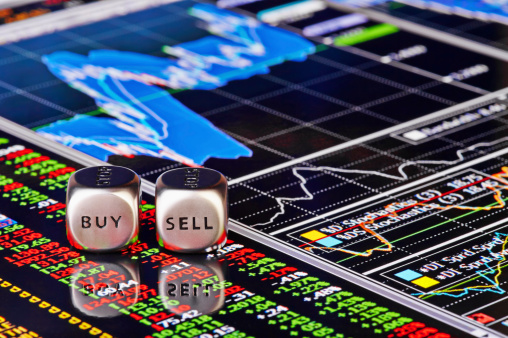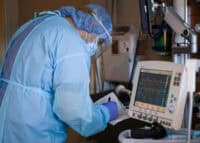By any stretch of normal measurement in earnings season, Gilead Sciences Inc. (NASDAQ: GILD) should have been a rocketing stock on Wednesday. Gilead blew away earnings and revenue estimates. Its Sovaldi Hepatitis C drug also blew out expectations. That being said, there is a real reason – and maybe reasons – as to why Gilead is not up massively.
Gilead now finds itself in the same boat that biotech giant Amgen Inc. (NASDAQ: AMGN) has found itself in during the past. That is simply high drug prices and no competition garnering government pressure about pricing. Ultimately, Amgen won and that allowed the stock to resume its growth. The problem is what happened in the mean time.
Here is what looked so great on Gilead’s earnings:
- earnings at $1.48 per share, way above the $0.89 per share estimate
- Sovaldi sales of $2.3 billion were almost $1 billion higher than expected
- revenues of $5 billion, also about $1 billion above rounded estimates
Again, the numbers looks stellar. The problem is that many investors will worry that Gilead is now likely to face harsher pressure from regulators and the government to lower its Hep-C treatment. After all, Sovaldi’s cost is generally listed as being $1,000 per daily pill, or $84,000 over 12 weeks of its treatment.
ALSO READ: 10 Companies Betting on the Next Blockbuster Drugs
Lawmakers and insurers alike have been trying to revolt against the price. Gilead may have a feather in its cap here – Sovaldi cures Hepatitis C outright in most cases. Over, done. This gives Gilead ammunition to say that Sovaldi is cheap when you consider that the treatment is so short and represents a cure. Apparently there are more than 350,000 deaths each year from hepatitis C-related liver diseases.
Another issue to consider is that Gilead has come under fire like this before, but for its pricing on AIDS treatments. FiercePharma showed that Doctors Without Borders, the AIDS Healthcare Foundation, and a group of Democratic members of Congress were trying to fight against its $28,000 per year charge for its four-in-one HIV pill Stribild. That was also shown to be after years of lobbying from activists looking for price breaks on the drugs.
Now, keep in mind that Hepatitis C affects 130 million to 150 million people across the globe, including 3.2 million Americans. Curing 90% of 3.2 million Americans in 12 weeks to 24 weeks should give Gilead a leg to stand on over its pricing. Still, investors have to worry that Sovaldi’s price may be forced down – perhaps even by the bully pulpit with this being an election year.
Gilead has spent a total of about $5.1 billion combined R&D over the last three years, and its net income attributable to shareholders has been about $8.5 billion spread over those same three years.
ALSO READ: UBS Drug & Bio Picks Chasing the Cure for Cancer
On top of fears that pressure for Sovaldi pricing will grow, Gilead’s headlines are full of the tem “value stock” now after earnings. Investors do not buy biotechs for a value stock analysis. They generally want to buy growth – generally. Gilead trades at just over 12-times expected 2015 earnings, and that is with major growth this year and next. That is generally cheaper than most old world pharmaceutical stocks. What Gilead does not have in common is a dividend at all, let alone a high dividend from pharma giants.
Gilead does still have a lot going for it. Its drugs are winners, even if they are deemed expensive winners. If you are an established biotech and pharma investor, chances are high that you are going to already own Gilead from some point much lower in price. Even after being $10 from its all-time stock high, Gilead is worth $114 billion on the market.
Analysts have been positive by and large on Wednesday after the report. The problem is that new investors feel that the great growth seen in the past is now just in the past. Gilead is the largest biotech stock that there is, and Amgen is $30 billion behind it in market cap. Keep in mind that Gilead’s stock gain since the start of 2012 had been about 300% prior to the recent pullback.
In 20 Years, I Haven’t Seen A Cash Back Card This Good
After two decades of reviewing financial products I haven’t seen anything like this. Credit card companies are at war, handing out free rewards and benefits to win the best customers.
A good cash back card can be worth thousands of dollars a year in free money, not to mention other perks like travel, insurance, and access to fancy lounges.
Our top pick today pays up to 5% cash back, a $200 bonus on top, and $0 annual fee. Click here to apply before they stop offering rewards this generous.
Flywheel Publishing has partnered with CardRatings for our coverage of credit card products. Flywheel Publishing and CardRatings may receive a commission from card issuers.
Thank you for reading! Have some feedback for us?
Contact the 24/7 Wall St. editorial team.



